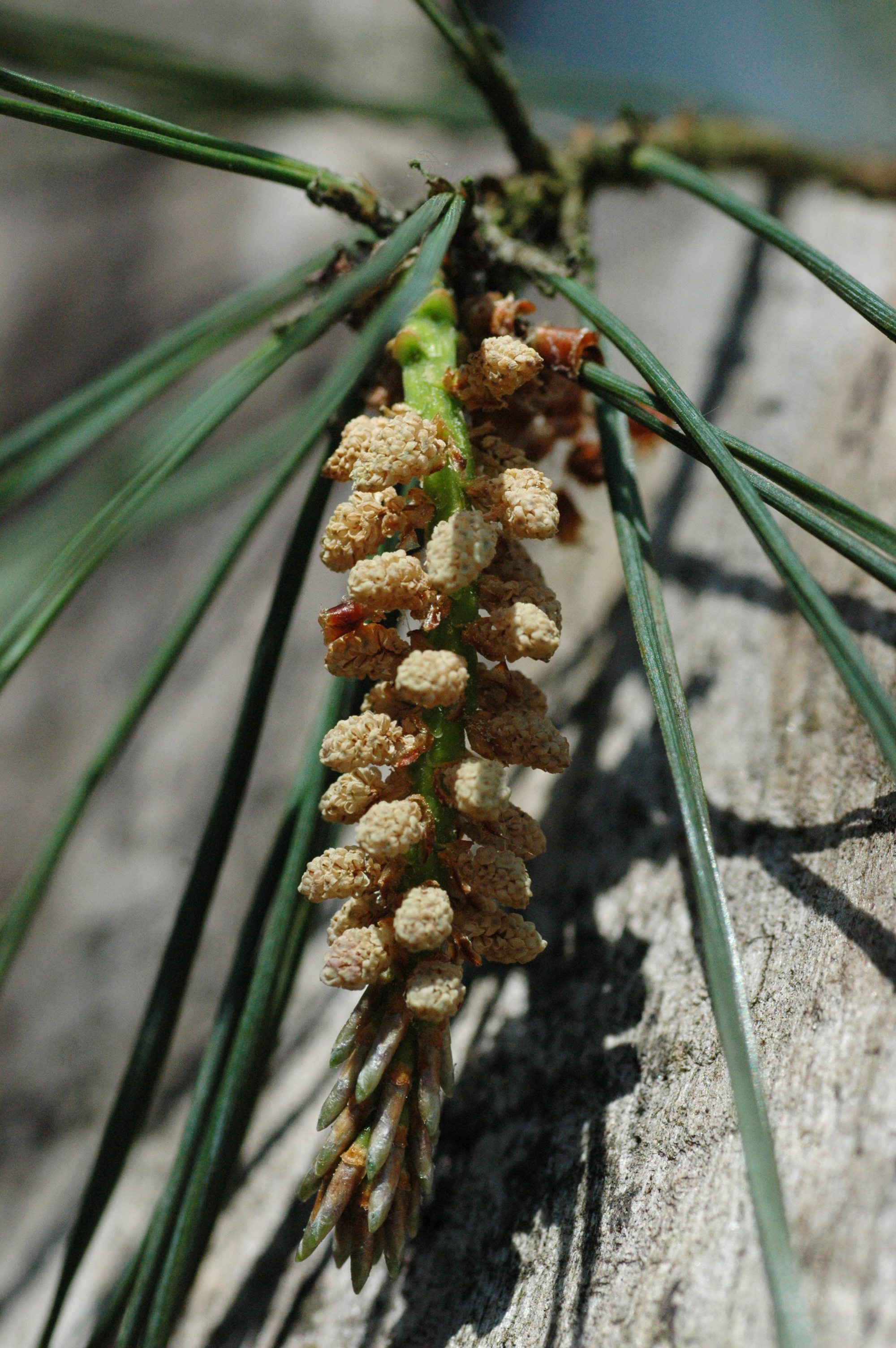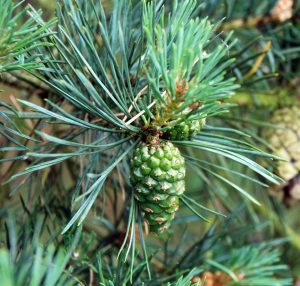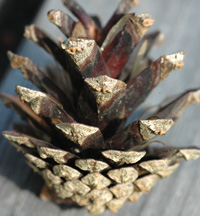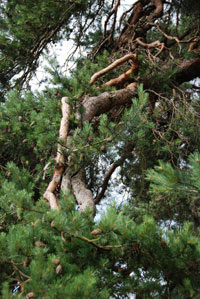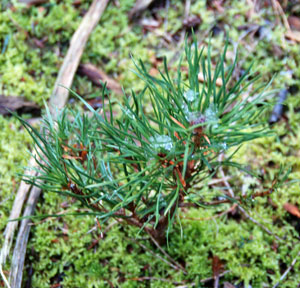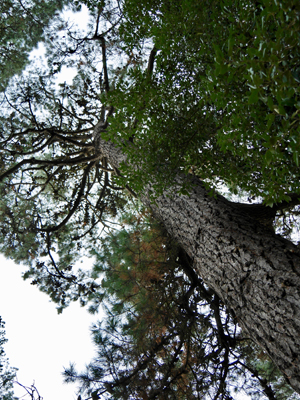Scots Pine
/
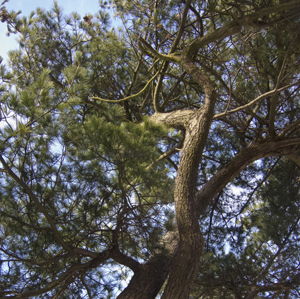
Probably the most widely distributed conifer in the world. It is one of the UK’s three native conifers - the other two being Yew and Juniper. It moved into country as the glaciers from the last Ice Age began to recede. Pollen records indicate that it was present in southern England some 9000 years ago, it then moved into Scotland. As the climate warmed, it was lost from most of England. Sometimes described as an ‘honorary hardwood', as it grows slowly than certain conifers and produces a good quality, hard timber.
Leaf
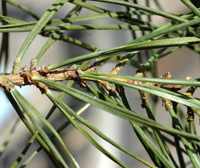
Simple leaves. The needles grow in pairs and have a smooth edge. They are a blue-green colour and about 5 cm (2 inches) long. They normally remain on the trees for 2-3 years, with the old needles turning yellow in September or October just before they are shed. In cold climates, the leaves may persist for up to nine years. The tree is 'green' all year round.
Buds, Bark & Stem
Drops of sticky resin often cover the tree's buds, and also provide a natural preservative for the wood. If a Scots pine dies while it is still standing, the 'skeleton' can persist for 50 or even 100 years before falling down as the high resin content in the sap makes the wood very slow to decay. The lifespan is normally between 150 – 300 years. On young branches, the bark can be quite thin and a pink/red colour; whereas on a mature tree it can range from grey to pink. This colour may be more obvious on the top part of the tree. The bark forms thick flakes, which have deep cracks or fissures between them. Pine bark can be quite variable in appearance.
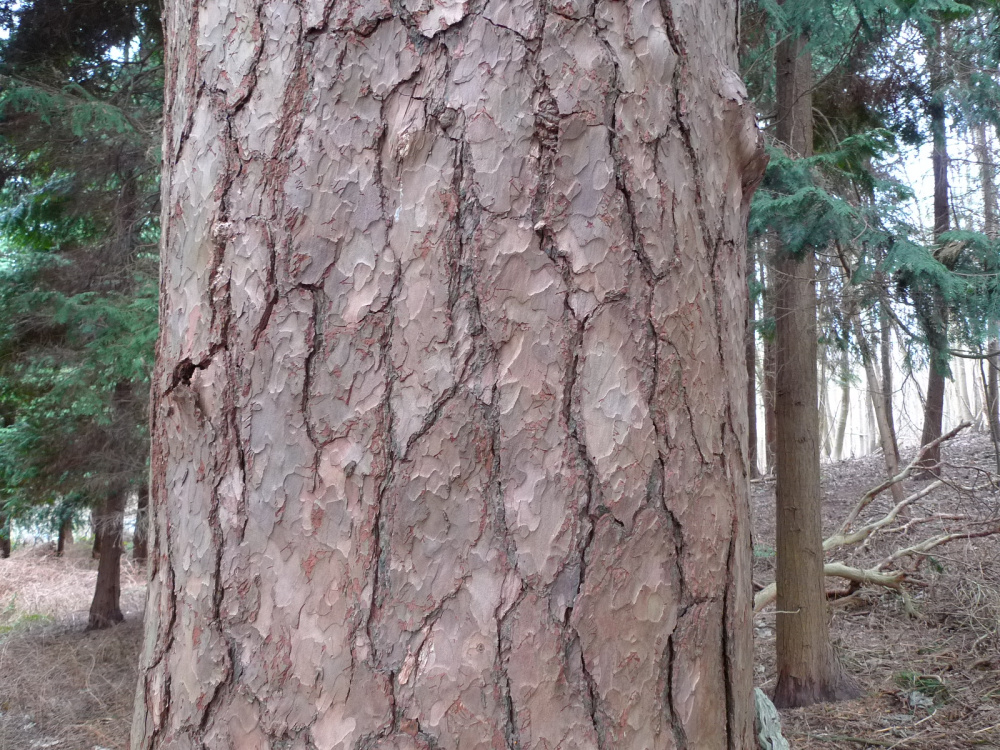
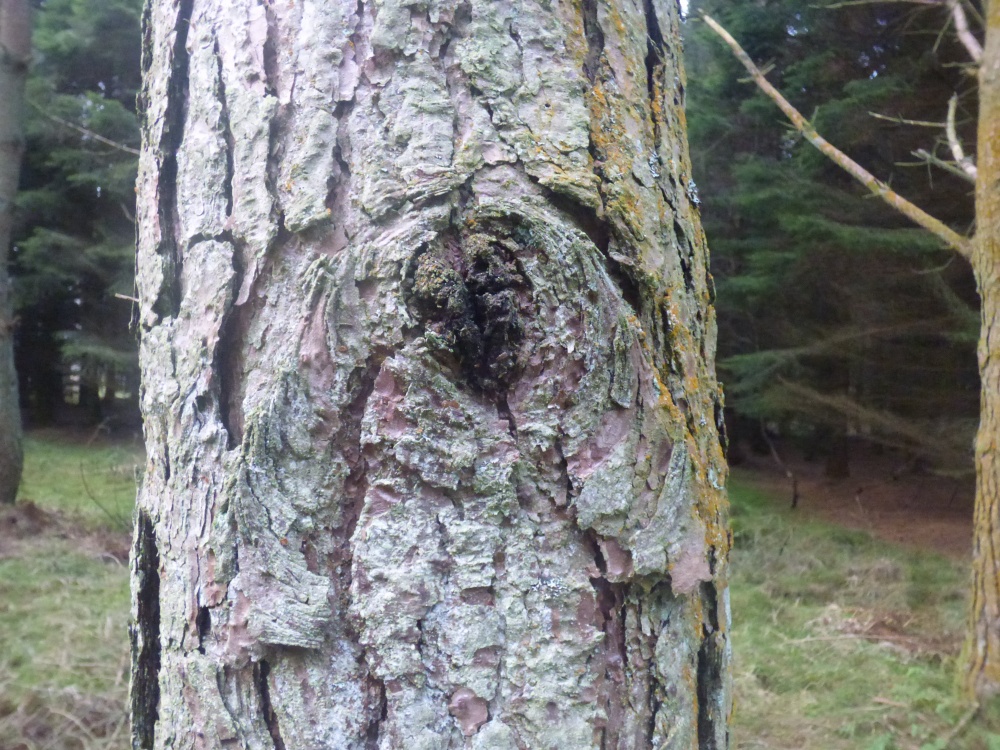
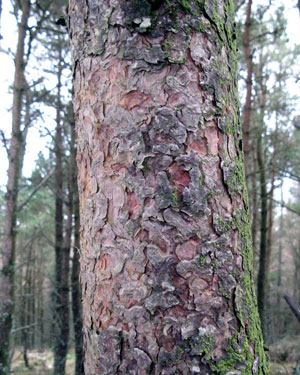
Flowers and Fruits
Male and female flowers are found on the same tree. The female flowers tend to be found on the higher branches, with the male flowers clustered together on the branches below. The pollen is dispersed by the wind, fertilised female flowers take some two years to develop into a cone. The seeds are blackish and small with a pale brown wing. They are released when the cones open in the Spring, some 22–24 months after pollination.
